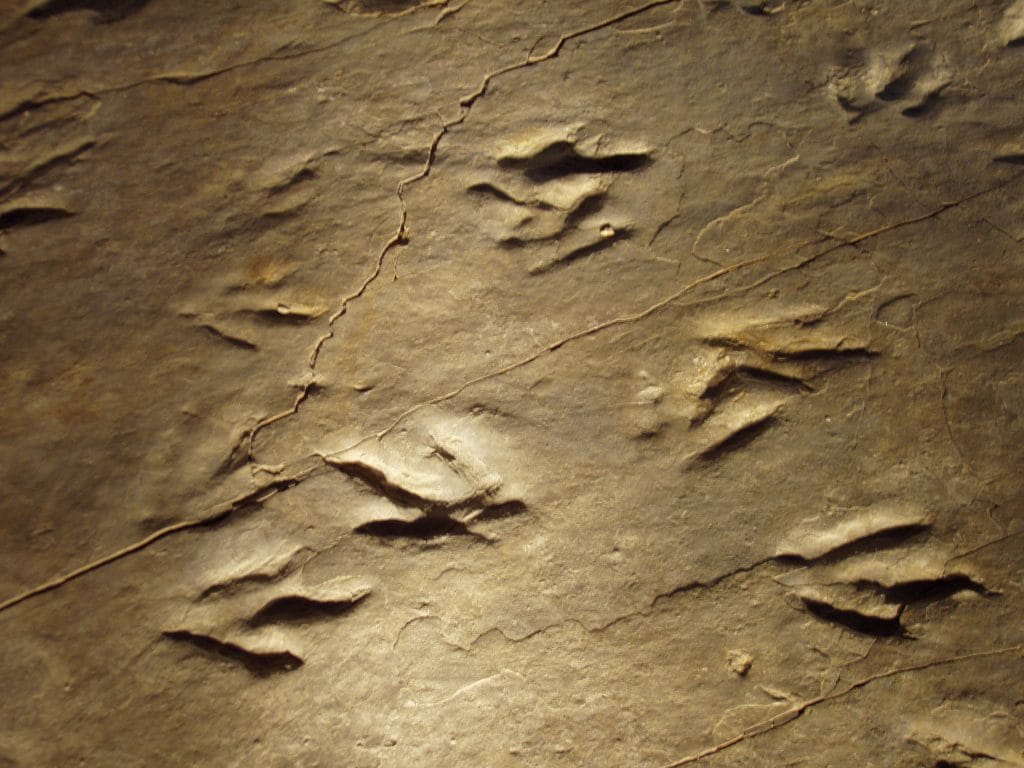In a groundbreaking discovery, paleontologists have unearthed a series of dinosaur tracks in England that date back approximately 166 million years, during the Jurassic period. This remarkable find, located in a coastal area, consists of well-preserved fossilized footprints that offer a rare glimpse into the lives of these ancient creatures. The discovery not only enhances our understanding of the types of dinosaurs that inhabited the region but also provides critical insights into their behavior, movement patterns, and the ecosystems they thrived in.
The tracks were discovered by a team of researchers who were conducting a routine survey of the coastal geology. Upon closer examination, they recognized the significance of the fossilized footprints, which were remarkably well-preserved, allowing for detailed study. The tracks vary in size and shape, indicating the presence of multiple dinosaur species that once roamed the area. This diversity suggests that the region was a vibrant ecosystem teeming with life during the Jurassic period.
Paleontologists have long sought to understand the behavior of dinosaurs, and these tracks provide a unique opportunity to study their locomotion. By analyzing the spacing and depth of the footprints, researchers can infer details about how these dinosaurs moved, whether they traveled in groups, and even their possible interactions with one another. Such information is invaluable for reconstructing the social dynamics of these prehistoric creatures.
The significance of this discovery extends beyond the footprints themselves. The location of the tracks offers insights into the environmental conditions of the time. The coastal area where the tracks were found likely had a mix of land and shallow water, creating an ideal habitat for various dinosaur species. This finding aligns with existing theories about the types of environments that supported dinosaur life during the Jurassic period.
Additionally, the discovery contributes to the broader narrative of dinosaur evolution and migration. As paleontologists continue to piece together the puzzle of prehistoric life, findings like these help to clarify the geographic distribution of dinosaur species. Understanding where different species lived and how they adapted to their environments is crucial for grasping the evolutionary history of these remarkable animals.
The discovery of these dinosaur tracks is not only a triumph for the scientific community but also an opportunity for public engagement with paleontology. As news of the find spreads, it has the potential to inspire interest in the field among students and the general public. Museums and educational institutions may take the opportunity to showcase this discovery, promoting awareness of the importance of paleontological research and the history of life on Earth.
In addition to the scientific implications, the discovery highlights the ongoing importance of preserving natural sites for research and education. As development and climate change threaten many fossil-rich areas, it is crucial to protect these locations to ensure that future generations can continue to learn from them. The collaboration between scientists, conservationists, and local communities will be essential in safeguarding these invaluable resources.
In conclusion, the discovery of dinosaur tracks dating back 166 million years in England represents a significant advancement in our understanding of prehistoric life. These fossilized footprints provide critical insights into the behavior and ecology of dinosaurs during the Jurassic period. As researchers continue to study these tracks, they will undoubtedly uncover more information that will enrich our knowledge of these ancient creatures and the environments in which they lived. This find serves as a reminder of the importance of paleontological research and the need to preserve our planet’s natural history for future exploration and discovery.



